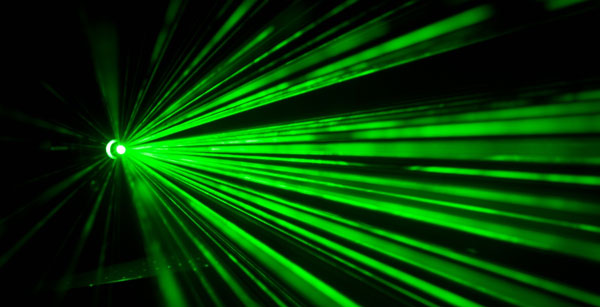What is the full form of LASER?
The LASER full form is Light Amplification by Stimulated Emission of Radiation. LASER is a sort of electromagnetic device that may emit electromagnetic radiation in the form of light. These lights are both coherent and extremely dim. They are created using a process known as optical amplification.
Read Other Full Forms
Origins of LASER
Einstein was the first individual to describe the LASER process. The method was however fully developed by Theodore H. Maiman in 1960. The LASER was essentially based on Charles Hard Townes and Arthur Leonard Schawlow’s idea.

LASER working principle
A basic laser consists of a chamber known as the cavity, which is designed to reflect visible, infrared, or ultraviolet light waves to reinforce each other. The cavity could contain liquids, solids, or gases. The choice of material in the cavity determines the output wavelength. There are mirrors at both ends of the cavity. One of the mirrors is totally reflecting, preventing any light from entering it. The other mirror is somewhat reflecting, allowing 5% of the light to flow through. External energy is pumped into the cavity using the technique known as pumping.
Between the mirrors, the waves are mirrored back and forth. The length of the cavity is such that reflected waves reinforce one another. At the end of the cavity, where a partially reflective mirror is located, electromagnetic waves emerge in harmony. The output of the laser is a coherent electric field. A coherent beam of electromagnetic radiation has the same phase and frequency for both waves.
LASER types

The following table categorizes LASERs by wavelength and application.
- Gas LASER
- Semiconductor LASER
- Chemical LASER
- Liquid or Dye LASER
- Excimer LASER
Properties of LASER
We may classify the laser beam characteristics into four main groups, such as
- Superior Coherence
- Superior Monochromatism
- High Output
- Superior Directivity
Using these laser properties, are used in various fields, such as optical communication and protection.
Applications of LASER
- DVD, CD, and Barcode Scanners all employ LASERs.
- Lasers are utilized in a variety of devices, including drilling, cutting, surface treatment, welding, and soldering apparatus.
- Lasers are utilized in medical devices such as dental treatment devices, cosmetic treatment equipment.
- In laser printing devices, lasers are used.
- LASER is utilized in military equipment (missile defense systems) and is a vital part of nuclear fusion reactors.
Benefits of LASER
- It is utilized for information transmission in the sphere of communication due to its vast information-carrying capability.
- This notion of electromagnetic non-interference is utilized in wireless communication systems utilizing free space for both telecommunication and computer networking, as laser radiation is not susceptible to this interference.
- Laser radiation contains extremely little signal leakage.
- Due to their small weight, laser-based fiber optic wires are utilized in fiber optic systems.
- In the medical field, lasers are often employed for cancer diagnostics because they are less hazardous than X-rays. On the surface of the eye and the surface of the tissue, they are used to burn tiny tumors.
Disadvantages of LASER
- Lasers are expensive, thus patients who require laser-based therapy choices incur substantial costs.
- Lasers are costly to maintain, resulting in hefty expenses for doctors and hospital managers.
- Lasers increase the convolution and duration of treatment according on laser equipment.

